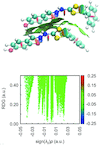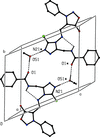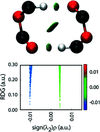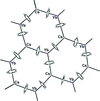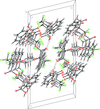issue contents
July 2020 issue

Cover illustration: Neutron powder diffraction has been used to redetermine the structure of hemihydrate phenol. This very simple alcohol is an ideal system to analyse the interplay/competition of different supramolecular forces (hydrogen bonding, ![[pi]](/logos/entities/pi_rmgif.gif) -
-![[pi]](/logos/entities/pi_rmgif.gif) stacking and C-H
stacking and C-H
![[pi]](/logos/entities/pi_rmgif.gif) interactions) in determining the outcome of the solid-state packing. The hemihydrate form described in the paper gives rise to inversion dimers bridged by water molecules, which then propagate in supramolecular chains along the c-axis direction. The chains are held together in the bc plane via C-H
interactions) in determining the outcome of the solid-state packing. The hemihydrate form described in the paper gives rise to inversion dimers bridged by water molecules, which then propagate in supramolecular chains along the c-axis direction. The chains are held together in the bc plane via C-H
![[pi]](/logos/entities/pi_rmgif.gif) interactions. The different interactions governing the crystal structure impact the thermal expansion properties of the material. See: Fortes [Acta Cryst. (2020). E76, 1062-1069].
interactions. The different interactions governing the crystal structure impact the thermal expansion properties of the material. See: Fortes [Acta Cryst. (2020). E76, 1062-1069].
research communications














































































 journal menu
journal menu













